Learning Catalan (resources, tips, and more) [2021]
by Marissa Blaszko · January 7, 2021
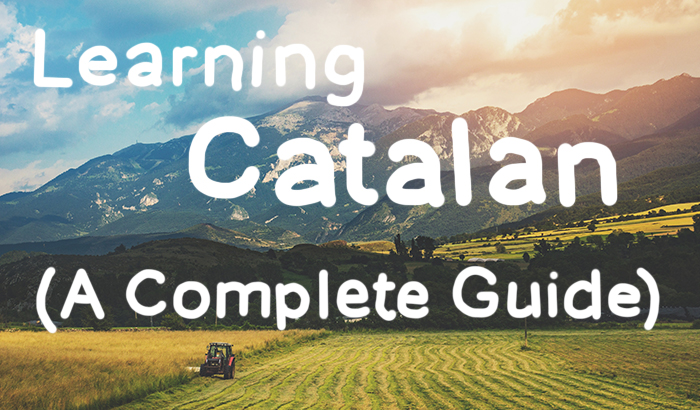
When I began learning Catalan, I had a few big problems:
- A lack of well-known resources for learning
- A lack of easily-accessible listening practice for beginners
- No information on where to even find these two things
So after two years of speaking and learning Catalan myself, I wanted to put together a comprehensive guide for other new students.
By the end of this article, you will:
- Have a general understanding of the status of Catalan (and why it’s important to learn the history and culture)
- Know how to pronounce Catalan words (and why pronunciation matters)
- Have a general understanding of Catalan grammar and how it compares to either French or Spanish
- Know which resources you want to use for learning Catalan
- Get all of my tips for learning Catalan (and learn from my own mistakes)
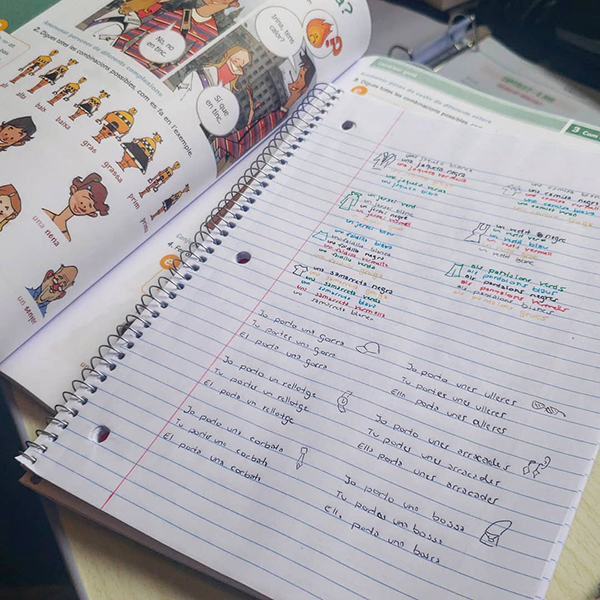

This is where you can take action and start your own Catalan learning journey!
FYI, a few of the products on this page use affiliate links, meaning I may earn a small commission at no extra cost to you. I only link to products I myself use and have recommended to my own friends.
Table of Contents
1. Myths & Facts about Catalan
Before we jump into the resources you’ll need for learning Catalan (like textbooks or YouTubers) or fun things you’ll get to discover (like Netflix or movies) we need to address some myths about the Catalan language.
Many of today’s Catalan speakers lived through a period where speaking their native language in public was illegal.
And while those laws have been turned over, many of the myths about the language still haunt its speakers.
So to keep you from accidentally embarrassing yourself when speaking Catalan, let’s make sure you don’t believe any of these old myths.
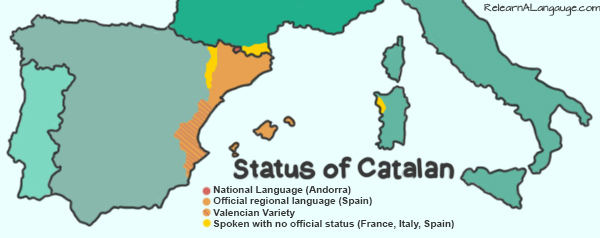
Myth: Catalan is a dialect of Spanish.
Fact: Catalan and Spanish both emerged together and at the same time from Latin. From a common ancestor, they slowly separated into two distinct languages. What’s more, historians believe the first piece of Spanish literature was Cantar de Mio Cid, an epic poem from about 1140. The first piece of Catalan literature may have been Homilies d’Organyà, a series of sermons from around 1098. So while both languages emerged from the same place and same time, written Catalan is arguably a hair older than Spanish.Myth: Catalan is a tiny, dying language.
Fact: Catalan has over 4 million native speakers, making it one of the top 100 most spoken languages on Earth. (There are 6,000-7,000 active languages today, depending on your definition of a language.)
Catalan is spoken in 4 countries: Andorra (as the only official language), Spain (as an official regional language), France, and Italy (where it has minority status).
And in the past 30 years, since the implementation of Catalan-language schools in Spain, the language has seen a massive bloom of literature, film, television, music, and culture.
Myth: Learning Catalan isn’t practical. It’s a useless language.
Fact: Catalan culture, literature, cuisine, festivals, and arts are some of the most amazing in all of Europe. The language will give you access to all of those things (and its speakers) like nothing else.
But if you want to talk about pure numbers, Catalan is an official co-language of Barcelona–the city which has the 7th highest GDP in Europe. [source] And out of 196 UN-recognized nations, Spain has consistently ranked within the top 20 for quality life, surpassing Canada, Ireland, France, and many other wealthy countries. [source]
Myth: The Catalan language used to be illegal to speak, but now it’s protected and in no danger.
Fact: It depends on how you define linguistic threats to a language.
For many linguists, the biggest indicator of a language’s long-term success is if it’s transmitted between generations. In Spain and Andorra, Catalan is taught in schools and spoken in government and business, so it’s being translated without a problem. But in Italy and France, where dozens of minoritized languages have no official status, transmission between generations is starting to fade.
But for many filòleg Catalans, the language is facing a different problem: a massive invasion of Spanish and English grammar and vocabulary. Some of these Catalan language experts worry that within a few generations the language will lose much of its unique identity.
Myth: If you speak Spanish, learning Catalan is easy.
Fact: As you’ll see in this article, you can’t walk into Catalan simply thinking you’ll be able to pick it up without a problem.
While knowing Spanish will give you a distinct advantage over monolingual English speakers, Catalan is also littered with false friends, distinct grammar, and varied pronunciation rules.
So to speak good Catalan that will win you friends and help you enjoy the culture, you’ll need to work at it.

Is there anything you want to keep investigating yourself?
2. Learning Catalan Pronunciation
(Mini-Tutorial)
Learning the pronunciation of Catalan is a crucial (and fun) step in your language.
But when I was learning Catalan, no comprehensive guide existed online.
So I wrote this one myself.
Catalan has several major varieties and dialects, two of which (one from Barcelona and one from Mallorca) you can see on the videos above.
For this tutorial, we’ll be going into what the Metropolitan variety (from Barcelona) since it’s the dialect you’ll hear most often on TV.
But what makes two accents different?
If two speakers are speaking the same varieties, shouldn’t they all sound the same?
Well, we speak a language, we produce a series of sounds using our vocal cords, jaw, tongue, and facial muscles.
Those sounds make up syllables, and those syllables make up words and sentences.
So when you’re learning a new accent, an amazing way to start is to see a diagram of sounds.
Thankfully, linguists invented this map (known as the IPA chart) to show us how we produce various sounds in any language.
It looks tricky. But it’s not.
Pretend the grid you see here is a map of a country.
Each vowel is where a potential city could be.
That’s because this is map of every single possible vowel sound a language could have.
It looks tricky, but it’s not.
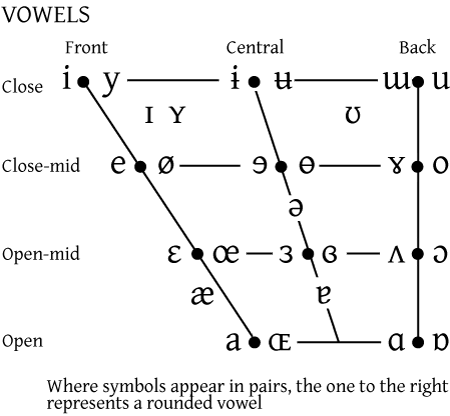
If you speak English, look at the IPA chart below. Try saying the four words on the chart out loud.
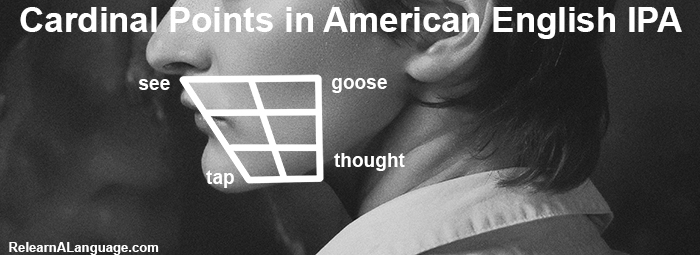
When you say “see”, your mouth will be closed and your tongue flat against the roof of your mouth.
When you say “tap”, you mouth will open up wide for that a-sound.
Try saying “see” and “tap” several and pay attention to how your mouth feels or looks in a mirror.
When you say “goose”, your mouth will be closed but your tongue pulled back.
Trying saying “see” and “goose” several times and pay attention to what your tongue does.
When you say “thought”, your mouth will be opened and tongue pulled back.
Try saying “tap” and “thought” several times and pay attention to what your tongue gues.
Now, try saying all of those 4 words in a circle paying attention to what your jaw and tongue do.
That’s it! That’s the IPA.
Learning Catalan Vowel Sounds
Spanish has one of the most simple IPA vowel systems in the world with only 5 vowel sounds. (Compare that to 20 in English.)
If you want to practice your Spanish vowels, say the words: sí, ser, antes, o, tú.
Spanish Vowels

Catalan Vowels

Standard Catalan (as it’s taught in Barcelona) also has a relatively simple vowel chart with two main differences.
First, Catalan has a few vowel sounds that are “in between” some Spanish vowels.
An un-stressed Catalan e will sometimes sound A-ish.
An unstressed Catalan O will sometimes sound U-ish.
If you’re learning Catalan, the best way to think about these is that these unstressed vowels are a bit more “relaxed” and not as firm as their Spanish counterparts.
Because the second change is that even sounds that Spanish and Catalan have in common are a bit different.
The Catalan word “sí” is spelled identically to the Spanish equivalent. But the mouth is slightly more closed and the tongue slightly more relaxed.
The Catalan word “però” will sometimes sound like “peru”, “pro” “pru”, or even “paru” depending on the region the speaker is from. That’s because their vowel sounds aren’t as extremely placed in the mouth as a Spanish speaker’s.
Here, we mostly covered making vowels sounds. In the next section, we’ll go over how to practically use them, as well as consonant sounds as part of learning how to read in Catalan.
Because of the 20th century oppression Catalan speakers faced, many speakers are proud of their accents–and a learner pronouncing words like they’re Spanish won’t win friends.
While learning Catalan myself, the biggest compliments I’ve received were on my pronunciation and accent. If you really want to learn Catalan, it’s worth putting some real study time into learning it’s pronunciation.

What is your plan to practice these rules and pronunciation?
2b. The Catalan Alphabet
The Catalan alphabet
The Catalan alphabet is virtually identical to the English or Spanish ones, with some special differences.
Ç – In Catalan, this ç is pronounced like an S (just like in French). This word alçar is pronounced /al-SA/, not /al-CA/ or /al-CAR/.
Ll – In Catalan, the double L sound is identical to the Spanish double L sound. (A soft L-sound which is produced by laying the tongue flat against the roof of the mouth.) So llengua is pronounced in Catalan as it would be in Spanish.
l•l – – In Catalan, a piece of punctuation that separates two L’s simply means the L sound similar to the English L in “like”. (Also identical to the singular L sound in other Catalan and Spanish words.) The word il•lustració is pronounced /il-oo-stra-SIO/, almost identical to how it’s said in Latin Spanish.
K, W – The letters K and W appear only in assimilated foreign words and their derivatives such as in Nova York or clown.
NY – The combination of “ny” is pronounced like the Spanish ñ–a soft N-sound that doesn’t appear in English. The letter ñ does not exist in Catalan. So the Catalan word Espanya is pronounced identical España in Spanish.
Catalan consonants
Catalan consonants are pronounced almost identically to those in Spanish, but with two major exceptions.
casa – In Catalan, when an s falls between two vowels it has a soft Z sound, like in Italian. So this word is pronounced /KA-za/.
caminar – In Catalan verbs, the final syllable is stressed (just like in Spanish). But in the infinitive, the R is silent! So this would be pronounced /ka-mee-NA/
xocar – In the beginning of the word, the x is pronounced as the English “sh” of “should”. So this verb would be pronounced /sho-CA/.
mateix – When paired with an i, ix is also pronounced “sh”. So this word is pronounced /mat-ESH/.
cotxe – finally, the tz combination is pronounced “ch” (as in the English “choose” or Spanish “champiñones”). So this word is pronounced /ko-CHE/ or /ko-CHA/, depending on the dialect.
3. Catalan vs Spanish vs French
(Comparative Grammar)
Because of the extensive history Catalan shares with French and Spanish, you’ll find a lot of similarities in the languages.
But each language also has their own unique ways of looking at the world.
(And if that strikes you as a dramatic way to speak about grammar, well… just wait.)
If you’re not familiar with Spanish or French, you can feel free to skip this section and move onto the Catalan learning resources below.
Singular and Plural Markers
At first glance, Catalan articles look remarkably like those of Spanish.
But for words beginning with vowels, French speakers will find the familiar L in the singular.
You’ll also note how “la” become “les”. It’s pronounced the same as the Spanish “las”, and this A to E switch is normal in almost all feminine nouns when they become plural.
Catalan
Singular definite: el, la, l’
Plural definite: els, les
Singular indefinite: un, una
Plural indefinite: uns, unes
French Spanish
le, la, l’ . . . . . el, la
les . . . . . . . . los, las
un, une . . . . un, una
des . . . . . . . unos, unas
Infinitive Verbs and Present Tenses
Here are some infinitives in various verb groups (which I picked because they’re almost identical cognates), plus how they’re conjugated in the first person.
Catalan
AR: tocar, toco
RE: beure, bec
IR 1: dormir, dormo
IR 2: llegir, llegeixo
French . . . . . .. . . Spanish
(ER) toucher, je touche . . . . . (AR) tocar, toco
(RE 1) boire, je bois . . . .. . . . . . (ER) beber, bebo
(IR) dormir, je dorme . . . . .. . (IR) dormir, duermo
(RE 2) lire, je lis
Catalan and French share more similar verb groups than it does with Spanish, but conjugations tend to be more similar to how Spanish treats its verbs.
(And either way, neither Spanish nor French will help you in learning Catalan’s many false friends or irregular verbs.)
Now, conjugations aside, let’s look at the tenses available to Catalan.
Catalan
Present simple:
Camino
Present continuous:
Estic caminant
“I am” + “walking”
Present perfect:
He caminat
Haver “I have” + “walked”
French . . . . . . . . . . . .. . Spanish
Je marche . . . .. . . . . . . . . . . . . . . .. . Camino
— . . . .. . . .. . . . . . . . . . . . . . . . .. . . . . Estoy caminando
— . . . .. . . .. . . . . . . . . . . . . . . . .. . . . . “I am” + “walking”
J’ai mangé / Je suis marché(e). . . .He caminado
“I have” / “I am” + gerund . . . . . . . . Haber “I have” + “walked”
Catalan’s present tenses look and function almost identically to Spanish’s in
- types of present tenses,
- user of the auxiliary haver/haber, and
- no distinction between verbs of movement and non-movement.
Past and Future Tenses
Now let’s compare the past and future tenses in Catalan, because this is where stuff really gets fun.
Catalan
Future Simple:
Caminaré
I will walk
Future Auxilary:
—
—
French . . . . . . . Spanish
je marcherai . . .. . . . . . . caminaré
I will walk . . . . . . . . . .. . . I will walk
je vais marcher . . . .. . . voy a caminar
I’m going + to walk . . . . I’m going + a + to walk
If you speak a Romance language, “I’m going + infinitive” is a fantastically easy way to get out of worrying about conjugations.
So does Catalan just not have “to go” as an auxiliary verb?
Catalan
Past Simple:
vaig caminar
“I go” + “to walk”
Past continuous:
Caminava
(I was walking, I used to walk)
French . . . . . Spanish
— . . . . . . . . . . . . . . . caminé
. . . . . . . . . . .. . . . . . . . “I walked”
marchait. . . .. . . . . . caminaba
One fantastically hard habit to break for all Romance speakers when learning Catalan is not saying “I go + infinitive” to mean the future.
In Catalan, that’s the past.
Subjunctives
Instead of getting into this tricky bit of grammar (at least from the English perspective), let’s just do the highlights.
Learning Catalan vs Spanish subjunctive: The Catalan subjunctive moods are virtually identical to those of Spanish, both in conjugations and uses. The main difference between them is which verbs are irregular and how they’re used.
Learning Catalan vs French subjunctive: The Catalan subjunctive moods are used more often than in French. Their conjugations sound totally distinct from other tenses, but they’re used not only to express hopes and desires but uncertainties about the future and general habits/possibilities.
Pronouns
Catalan pronouns are probably their most unique grammar structure, so they’re worth seeing quickly here.
But because they’re so distinct, we’re not going to compare them directly to either French or Spanish.
Catalan distinguishes between direct and indirect pronouns, like Spanish and French. But it also changes how those pronouns look depending on if they’re placed before or after the verb, and if the verb begins with a vowel or consonant.
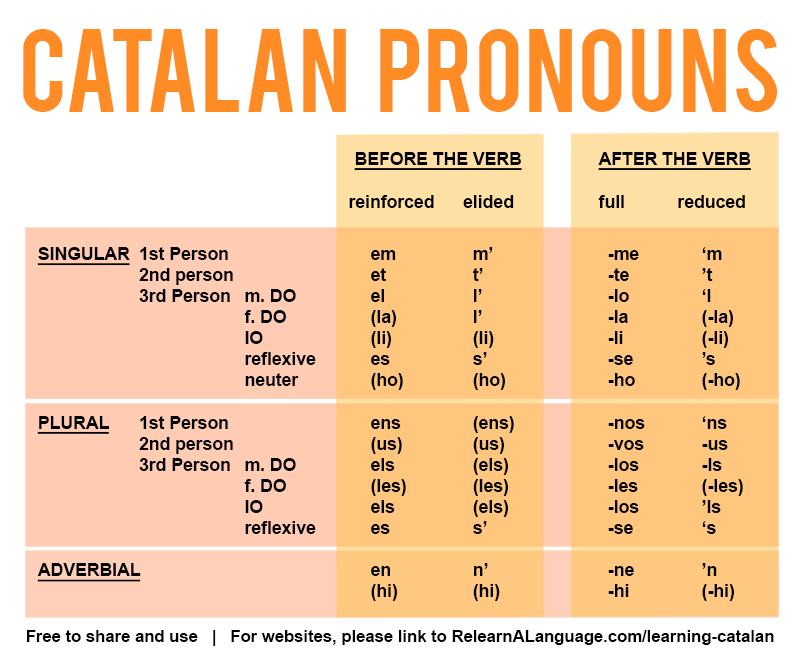
Catalan also has two “pronoms febles”, just like in French. (As seen at the bottom of the chart.)
In writing, Catalan pronouns look a little harder than they are in practice.
Spoken Catalan has a nice smoothness to it, like French, so dropping extra vowels and moving around consonants can quickly become a habit.
Grammar Unique to Catalan
We’ve spent most of this comparative grammar section expecting things to be somewhat similar between all three languages. Here are a few grammar points totally unique to Catalan.
Telling time
7:15? in Catalan, it’s “Un quart de vuit.” A direct English translation would be “One-quarter of eight” as in, one-quarter of the eighth hour.
11:30? You guessed it: two-quarters of 12.
(This is probably the most unique piece of Catalan grammar, so thanks to my reader Jake for helping me out with it!)
Using first names
My friend Joan is en Joan. My friend Judit is la Judit.
You use these articles whenever speaking about someone, similar to Portuguese.
Expression obligation
No tienes que utilizar <>. You don’t have to “tener” to express obligation.
Has de utilizar <>. You use have to use the auxilary “haver”.

What disadvantage might these languages give you?
What are you most excited to learn more about?
4. Beginner Resources
for Learning Catalan
There are more resources than you’d think for learning Catalan!
After my few years of studying the language, here are the tools I highly recommend.
(I’ve tried a lot more than the ones listed here, but unfortunately, most were really low quality and I won’t link to here.)
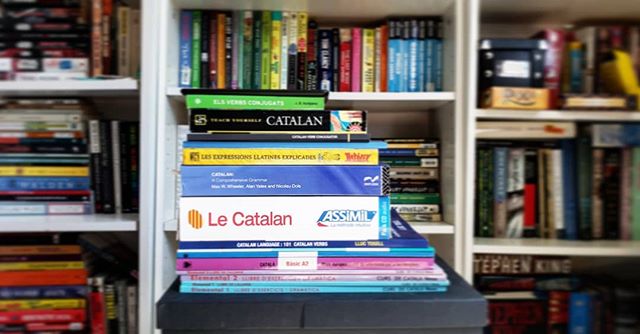
Learning Catalan Grammar and Vocabulary
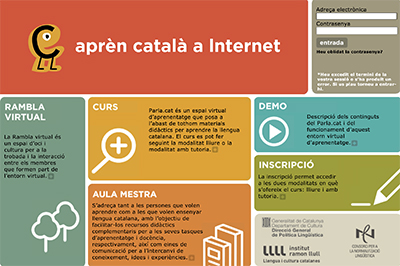
Parla.cat
Parla.cat is a government website dedicated to teaching Catalan (for free). However, you get what you pay for–and if you want to use it go ahead, but there are several workbooks I found to be a lot more helpful.
Textbooks and Workbooks
Because of how little good Catalan material there is online, I literally bought every single Catalan textbook and workbook available on the market.
(Some, but not all, are pictured here on the right. About half of these I don’t actually recommend, but you live and learn.)
So for learning Catalan by yourself or with a private tutor, the best textbooks and workbooks I actually recommend are:
Assimil – Learn Catalan through French or Spanish. It’s the most comprehensive of everything on this list. (Not pictured here.)
Català Inicial – These monolingual textbooks are perfect for false-beginners. You will need an Amazon.es account to find them outside of Europe, but they were my favorite resources to use by far. Click here for A1 and here for A2. (Top left in photo.)
Catalan Verb Conjugator – Unlike other languages, huge verb charts aren’t readily available online (so you’ll probably want this as a reference). (Not pictured here.)
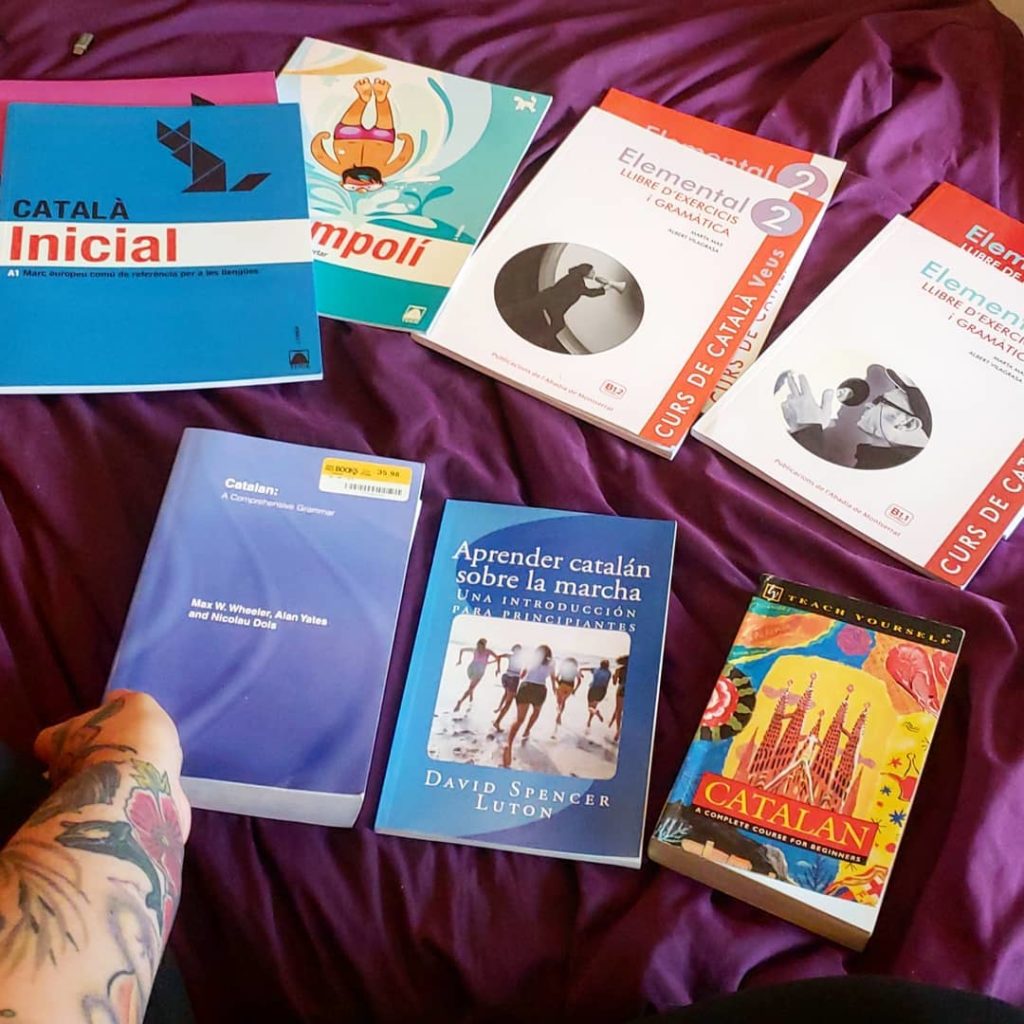
Teach Yourself Catalan – It has almost no exercises, but its explanations of grammar rules are simple and helpful as a reference if you don’t understand how some other source explains it. (Bottom right in photo.
uTalk
uTalk is the best Catalan app on the market. It uses huge sets of flashcards with images and audio from native speakers and is amazing for learning Catalan vocabulary. Available in Google Play or the App Store. (Watch this video to see my personal and unsponsored review of the app!)
Other Catalan Apps
uTalk is the only app I’ve personally found helpful in learning Catalan. However, there are a few others:- ClozeMaster – A fill-in-the-blank drill app with spaced repetition, active recall, and a ton of native content.
- Lyrics Trainer – Sing along to Catalan songs and fill in the vocabulary blanks. (Like karaoke meets a word search!)
- DuoLingo – Catalan is available if you set your default language to Spanish. (Unfortunately, the audio is garbage. So while fun it’s not very useful.)
Catalan Dictionary
The best Catalan dictionary by far is Multilingue.cat. You can search between Catalan, Castillian Spanish, English, French, and German.
Unfortunately, the dictionary search function isn’t perfect. After you type a word, click the button for the language you just typed in. (All results are multilingual.) If you spell the word incorrectly (or in a plural / conjugated form), a menu of similar Catalan words will pop up. So be prepared to play with it a bit.
iTalki
Finally, if you know language learning you know iTalki. It’s a huge directory of online language teachers, and although I generally try to support independent language teachers off of the platform, working with Catalan teachers here is what has made the biggest difference in my speaking abilities. Get $10 off your first class here.
YouTubers for Beginner Catalan
Unfortunately, there are very few YouTubers who explicitly teach Catalan to beginners. The best one I’ve found so far is Catalán Fácil which is made for Spanish citizens who don’t speak the language. Som Mainada is another channel I recommend for learning Catalan, but specifically for vocabulary. It’s a channel entirely of children’s songs in different playlists (so some can be a bit grating to listen to) but if you make your own playlist of just 5-10 songs and listen to it on repeat while singing along with the lyrics you’ll learn the vocab without really trying. (Farther down on the list I’ll suggest some Catalan YouTubers for intermediate learners.)At-Home Catalan Immersion for Beginners
Catalan YouTube Immersion for Language Learners
For Catalan listening practice, I suggest starting with the channel Easy Languages Catalan. Most of their content will be a bit hard to understand for absolute beginners, but it’s amazing listening practice since Catalan and English subtitles are built right in
Catalan Musicians To Check Out
The Catalan music scene feels like it’s going counter to the rest of global pop music right now.
The bands everyone knows are Manel, Txarango, Teràpia de Shock, ZOO, Sopa de Cabra, Blaumut, Buhos and Gossos.
But I’d also suggest checking out 31 FAM, Teuma Thug, Lildami, Miquel Abras, Jazzwoman, The Tyets, and Doctor Prats.
Catalan TV for Beginners
If you want to start watching TV, don’t start with Netflix.
Start with Catalunya’s home-grown TV station TV3 and their show Manual de supervivència. (See a clip below.)
It’s available for free streaming in most countries and explores Catalan culture through the eyes of immigrants. It’s spoken slowly and clearly, plus has well-made Catalan subtitles.
(We’ll get into more and better Catalan TV in the next section about intermediate tools.)
Learn Catalan Food Vocabulary through Cooking
We’ve picked out some of the easiest video recipes online and added a ton of English notes to make them accessible at any level of Catalan.
Click here or the image below!
Structure Your Catalan Learning Journey
To make sure you stick to the Catalan learning plan you made, I suggest downloading our free mini-course with printable habit trackers.
It’ll help you create an at-home learning plan for Catalan which you will track and stick-to.
(It’s based on my own language learning methods which have helped me become fluent in Catalan in 6 months, and I still use it every day with my own language studies.)

What will you do to make sure you actually use them?
5. Intermediate Resources
for Learning Catalan
If you already speak Spanish or French, learning Catalan to an intermediate level won’t take as long as learning a different language would. (Although at the end of this article I’ll talk about some problems you’ll have.)
Once you move onto B1 Catalan (the intermediate level), here are the resources you’ll want to switch to.
Lorem ipsum dolor sit amet, consectetur adipiscing elit. Ut elit tellus, luctus nec ullamcorper mattis, pulvinar dapibus leo.
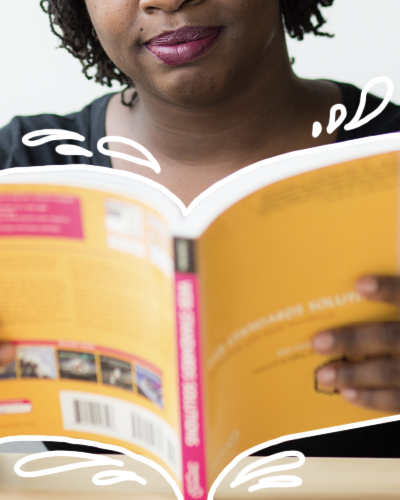
Intermediate Catalan Grammar Books
While there aren’t many great intermediate-level Catalan workbooks outside of Assimil (mentioned above), I suggest getting the Comprehensive Grammar for additional help.
It’s incredibly comprehensive and a great place to have all of your questions answered.
TV3 Cataluyna
TV3 is Catalunya’s public TV station and has some of the best programming in any language I’ve ever found.
Unfortunately, many aren’t available outside Spain.
For intermediate Catalan learners across the world, the shows I’ve loved and recommend are:
- No Pot Ser (tech and futurology)
- Sense Ficció (politics and tech docu-series)
- Crims (true crime)
- Katalonski (sketch comedy)
- El Llenguado (linguistics)
- Manual de Supervivència (Catalan culture, which I mentioned earlier on this list)
(ABOVE: the clip Katalonski parody of No Pot Ser. Come back and watch this skit once you’ve seen both shows!)
Catalan TV & Movies
For the past 40 years the Catalan government has used public money to create high-quality original TV and films, as well as dub over thousands of foreign films.
Unfortunately, most streaming services don’t carry the massive wealth of Catalan TV they could be despite this. The only fully Catalan streaming platform available is Filmincat, which is available for 7.99 a month, but unfortunately only available within Spain.
Here are the Catalan Netflix shows available internationally:
- Merlí (Comedy)
- Si no t’hagués conegut (Sci-Fi/Drama)
And Catalan Netflix movies:
- Benvinguts a la Familia (Comedy)
- La Propera Pella (Mystery/Thriller)
Catalan Documentaries
Because streaming sites like Disney+ and Hulu don’t offer movies and shows in Catalan (even though they exist), I recommend the site GuideDoc for documentaries in Catalan.
They normally have around a dozen and the quality is great. (Plus, it’s only $5/month, so you could reasonably watch everything on the platform in 30 days.)
Catalan Podcasts
Podcasts are increasingly my favorite way to live language immersion at home. There aren’t as many Catalan podcasts available as there are in German, Spanish, French, or more-commonly studied languages, but there are still plenty to keep you busy.
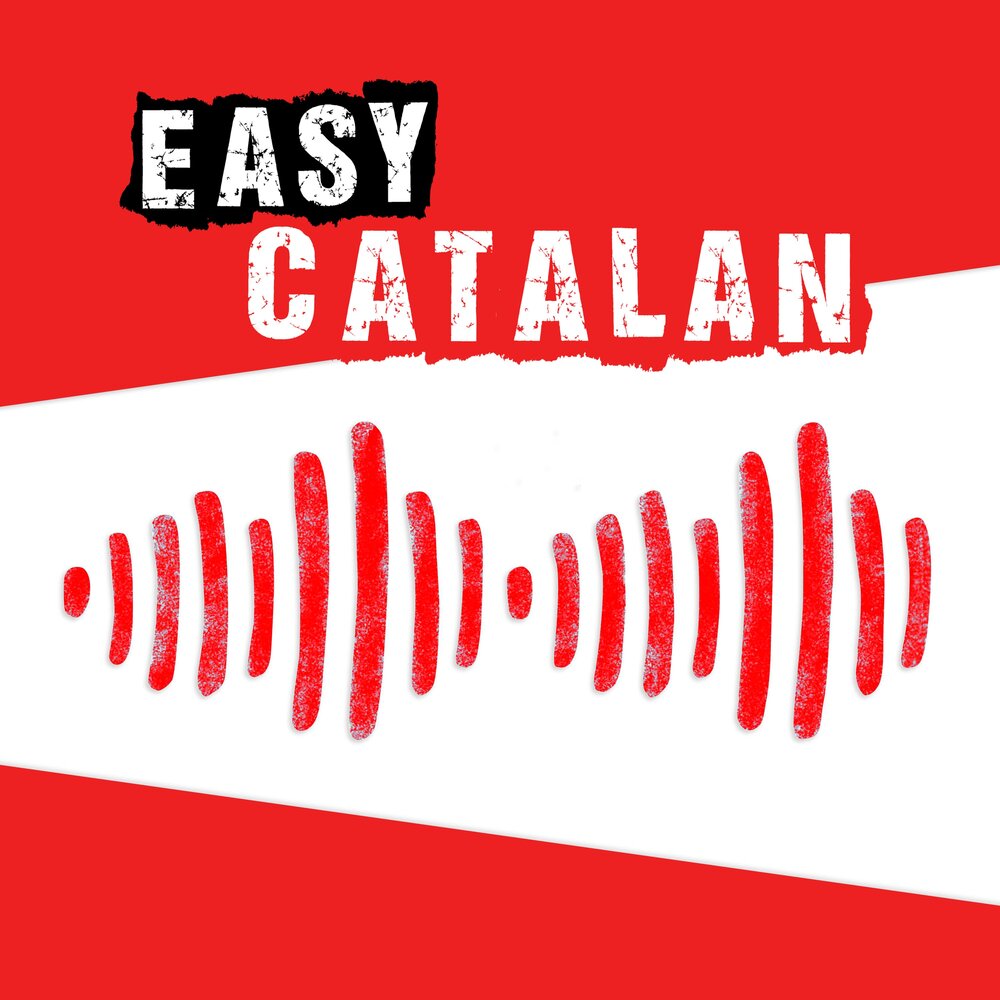
If you’re new to Catalan and want to ease in, the Easy Cat Podcast (by the Easy Languages production team) has culturally relevant and well-articulated episodes for you at the B1/B2 intermediate level.
The best made-for-natives Catana podcasting group is the public programming by TV3. You can see all the TV3 Podcasts on their website, but here are the ones I personally listen to:
- L’ofici de viure (self-help)
- Revolució 4.0 (tech / business)
- En guárdia! (history)
- La Terra és plana (physics/astronomy)
All of them are available on Spotify, Apple, Google Podcasts, and other major listening platforms.
Additionally, I recommend La Nit Més Fosca (true crime) from the production studio Ràdio Vilafant. (They have others, but most are archived and no longer updating.)
The Betevé show Oh My Goig! is about all types of relationships that touches on everything from what makes a good friend to sexuality in confinement to the rights of trans people. (Betevé has 3 other podcasts which you can find online, but they are mostly just pop radio so not as helpful for students learning Catalan.)
Finally, Plaza Radio has a number of Valencian-based podcasts in both Valencian and Spanish. (Remember that Valencian has a different name, but is the same language as Catalan–so it’s unique works and accent make it great listening practice!) Check out:
- Bombeja Agustinet! (soccer/football and Barça)
- C1 o Alça’t (for advanced language learners!)
- Ferits de Lletra (culture and history)
- Els llocs de la memòria (history, democracy, and oral history)
Catalan YouTubers
The overwhelming majority of Catalan YouTubers vlog in Spanish in order to reach international audiences. (If you look at the international success of Rosalía, you can understand why.)
And in Catalan itself, most vloggers are video gamers. (Which again–if you look at international trends, make sense.)
But if you’re learning Catalan, here are some fantastic channels that feature culture, books, or lifestyle that might interest you a bit more.
Watch the Catalan News
We’ve talked about public broadcasting on TV3 Catalunya, but they are by far the largest media group in the region and have great news programming.
There’s also betevé which is local to Barcelona and À Punt which offers Valencian news.
Catalan Cooking YouTubers
Cuines by TV3 has hundreds of traditional and contemporary Catalan recipes you can easily follow along with for a real at-home immersion experience.
Uep! Com anam? features full episodes and clips from the cooking, gardening, and rural lifestyle TV show with the same name produced by TV channel IB3 in Mallorca.
In 2017, a video of a child (the son of farmers) from Mallorca talking about life on (left) his farm went viral in Catalunya. Miquel Montoro has been a regional celebrity ever since (and one of the hosts of Uep! Com anam?)
Catalan BookTubers
laprestatgeria (left) is a booktube account where its hostess (a journalist from Valencia) talks about recent reads, classic books in the language, or culture in general.
Paraula de Mixa, la mar de llibres, Entrelletres, and Llig-me are other booktuber from the region if you can’t get enough of reading in Catalan.
Learn Catalan Linguistics
Lletraferint is a channel dedicated to the Catalan language–from analyzing the grammar of celebrities to taking on the political struggles of the language to explaining particularly hard parts of grammar.
There’s also a new channel RawPau which only has a few episodes, but has insanely high quality (and will hopefully keep uploading).
Finally, advanced learners might like the B2-C1 lessons by Dra. Aina Monferrer and Llenga a l’abast.
Catalan Lifestyle YouTubers
But if you just want to veg out and turn off your brain, I suggest bloggers like Juliana Canet (left), Galetamt, and Miss Tagless who make native YouTube content about their daily lives, lifestyles, and anything else.
Learn on YouTube (Using Catalan)
And if you’re a person who just loves to learn in general:
ParlemDeCiència (left) does super fun science
Teresa Patapum does crafts for adults and kids
Espai Ioga does yoga
Catalan Novels for Learners
Catalan literature is not only rich but has a much longer history than anything in English.
But for learning intermediate Catalan, here are a few books you can start with once you’ve reached the B-level.
If you’re not a confident reader in other languages, check out our free guide for how to read in a foreign language.
El geni de la bicicleta (David Nel•lo) – This is the only children’s book on the list since there are no graded adult readers in Catalan. But this beginner chapter book should help you ease into better catalan literature.
La plaça del Diamant (Mercè Rodoreda) – This novel is a classic and one of the most-read books by high school students, both for it’s notable author and memorable female protagonist. (As a bonus, you can also watch the 1982 TV adaptation online for free!)
La pell freda (Albert Sánchez Piñol) – This thriller is the most internationally awarded book written in Catalan. (It’s also one of the only Catalan audiobooks available through as Audible.)
Nit de divendres (Jordi Sierra i Fabra) – Want something more fun than serious? Check out this short coming-of-age novel.

Where to find books in Catalan:
- Llibres.cat – The biggest online Catalan books retailer, with thousands of Catalan titles available for download! All ebooks are compatible with Adobe Digitial Editions (so it works on Apple and Andoid devices once you download the app, as well as Kindle with a bit of work).
- Libel Lista – An online eBooks seller which works on behalf of a number of independent bookstores across Spain, and has over 4,000 Catalan eBooks! It also has better search options than Llibres.cat–just make sure you search by language as well!
- Amazon Kindle – Don’t want to mess with having to download additional readers? There are still some classic Catalan books on Amazon, but you’ll need to know exactly what you’re looking for when you search.
- ePUBCat – 3.6k free eBooks in Catalan at the time of this writing. However, you’ll need a torrent agent to download them (with instructions written on the website) and it’s a bit overwhelming.
For audiobooks, the only publishers I’ve been able to find are independent operations on Audible, so be warned that the quality of audio varies drastically.
Search for “Catala” (you can’t currently filter by language) and you’ll find books tagged with the language.
If you have any audiobooks you want to recommend for people learning Catalan, please leave them in the comments!

Will you save these resources or pin this blog post for later?
6. Polyglot Tips
(What I Didn't Know Before Learning Catalan)
In my experience, the biggest difference between polyglots and “I wish I could learn that” language learners is that polyglots know more about the language learning process.
Here are the biggest things I learned about the process of learning Catalan so you don’t have to repeat my mistakes.
1. Don’t rely on cognates or guessing.
I assumed because I knew both Spanish and French that I would be able to “transform” my other romance languages into Catalan just by guessing.
All this did was help me mix up my languages and sound like a Spaniard doing an imitation of Catalan.
Start from the basics. Take it word-by-word. You’ll find your experience with other Latin languages is extremely helpful (assuming you have some), but if you get too reliant on it it’ll also be your downfall.
2. Fer, not donar.
Similarly, don’t try to translate exact phrases from Spanish or French. No dones besos–fes petos. (You don’t give kisses–you make them.) This again comes from an over-reliance on Spanish or French that will ultimately cause your progress to stall out.
3. Work on your accent.
Take the mini-tutorial in this article to heart. Work on your accent and you’ll find people are more eager to speak with you in their language.
4. Learn as many Catalan-specific phrases as you can.
Fer fer? Fer volta? Está en la lluna de Valencia? Learn as many lovely little phrases you can to help you speak Catalan in a truly authentic way.
5. Focus on reading early.
While language about education, philosophy, or government is often the same, the most intimate household or personal vocabulary is not.
Focusing on reading Catalan instead of just relying on listening practice will help you dive into what makes Catalan unique earlier on.
6. Learn the history.
I opened this article with a word about language myths history–which isn’t normally something language blogs do. From as early as Day 1, don’t only learn the language but the history in depth.
This will help you understand a lot of unspoken context for exchanges you’ll have in the language that no one might want to explain to you.
Do you have any other questions about learning Catalan?
Do you know of any other beginner or intermediate resources that should be added to this list?
Leave any questions or comments below!
I’m extremely passionate about Catalan (and lesser-learned Romance languages in general) so I’ll be coming back to this article in the future to update it.
Feel free to pin it for future reference!
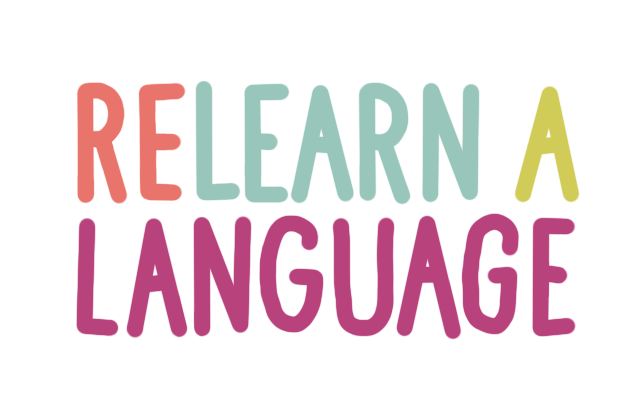

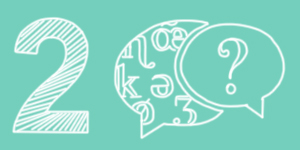
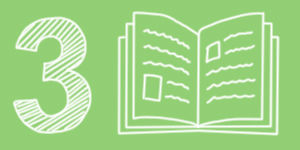

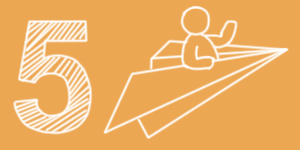

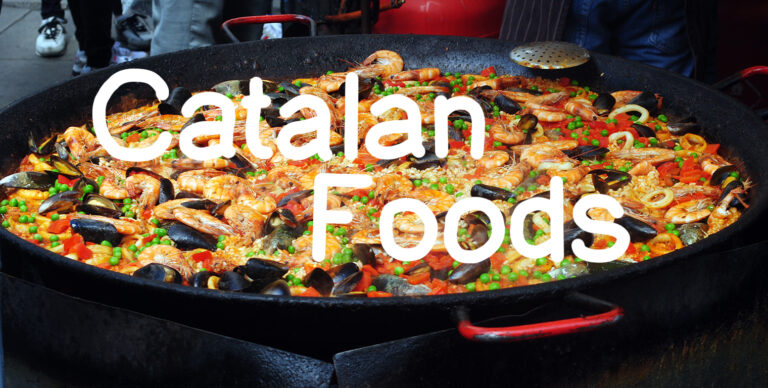
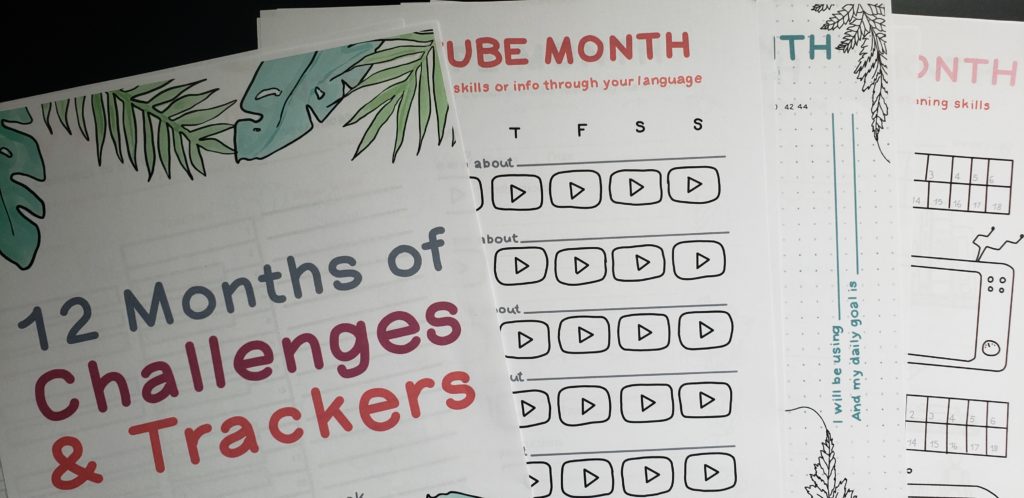
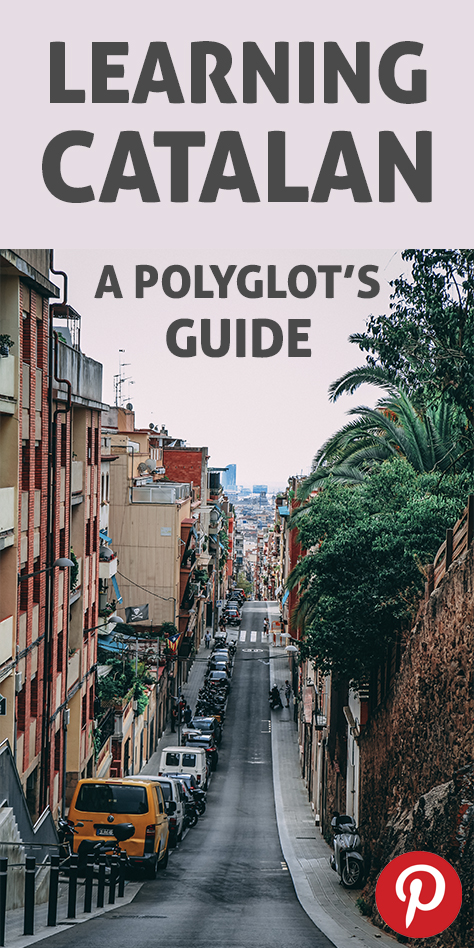
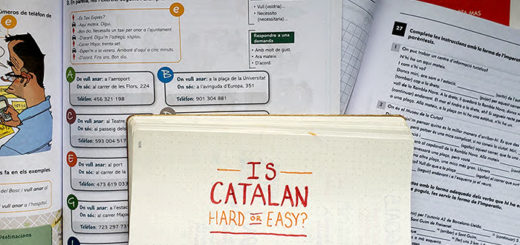
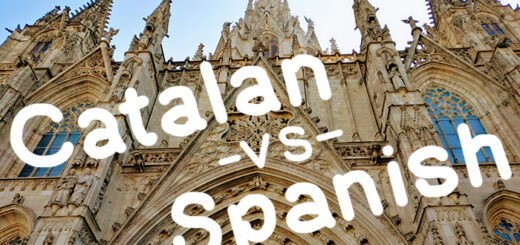


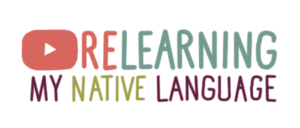
This is fantastic. Thank you so much for putting this together. I’ve just started learning Catalan as an absolute beginner and felt overwhelmed by a seeming lack of resources. I do have workbooks but felt stuck nonetheless due to being at A0 level. This is such a motivating and positive resource. Thank you!
Catalan is great! I’m so glad you’re starting it and that I could help 🙂 Also, since you left this note I actually added two more resources: an intermediate podcast (the only one to exist!) and a new app (Clozemaster!) so as you progress keep checking back and hopefully I’ll keep running into more and more stuff that helps. Happy learning!
Great content here, but you translated the grammar for telling time in a way that doesn’t make sense to me. To say 7:15 in Catalan, it’s “Un quart de vuit.” A direct English translation would be “One quarter of eight” as in, one quarter of the eighth hour. Ironically, most English speakers would interpret “quarter of 8” as 7:45, but in Catalan, you’re counting up the quarters of the hour until you get to the full hour.
Thanks for the note Jake! Time telling is probably the one piece of Catalan that I’ve basically ignored (times and dates are my least favorite part of any language haha) so I’m not surprised I got it wrong 🙂 Will update the post soon and credit you. Much appreciated!
Thank you loads.
Happy to help! Catalan is an amazing language (I’m listening to some música catalana in the background as we speak) so stick with it 🙂 bona sort!
There are delightful A1-C1 easy readers (with audio) from Publicacions de l’Abadia Montserrat, VEUS Lectures series. (VEUS also has textbooks, although the one I got was decidedly for group instruction.)
Start with the books for A1: Les Taules de l’Olivia, Des de la Terra amb Amor, Em dic Nicostrat. (They’re mixed in this list.) https://www.pamsa.cat/?s=Veus+lectures&asp_active=1&p_asid=2&p_asp_data=Y3VycmVudF9wYWdlX2lkPTU5MDY1Jndvb19jdXJyZW5jeT1FVVImcXRyYW5zbGF0ZV9sYW5nPTAmZmlsdGVyc19jaGFuZ2VkPTAmZmlsdGVyc19pbml0aWFsPTEmYXNwX2dlbiU1QiU1RD10aXRsZSZhc3BfZ2VuJTVCJTVEPWNvbnRlbnQmYXNwX2dlbiU1QiU1RD1leGNlcnB0JmN1c3RvbXNldCU1QiU1RD1wcm9kdWN0JmN1c3RvbXNldCU1QiU1RD1hdXRvcmVz
Y
I used this excellent (and a little quirky)
El català de la A a la Z by Susana Rodríguez-Vida
https://www.amazon.com/dp/1982968850/ref=cm_sw_r_apan_glt_i_V7FDEXWGQ6K88G6R728X
Thanks so much for sending these over Bonnie! They look super helpful, hopefully other learners think so too 🙂